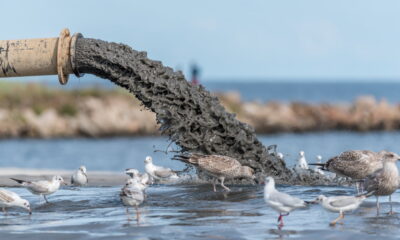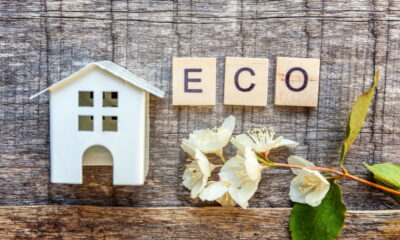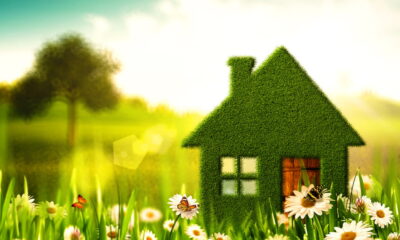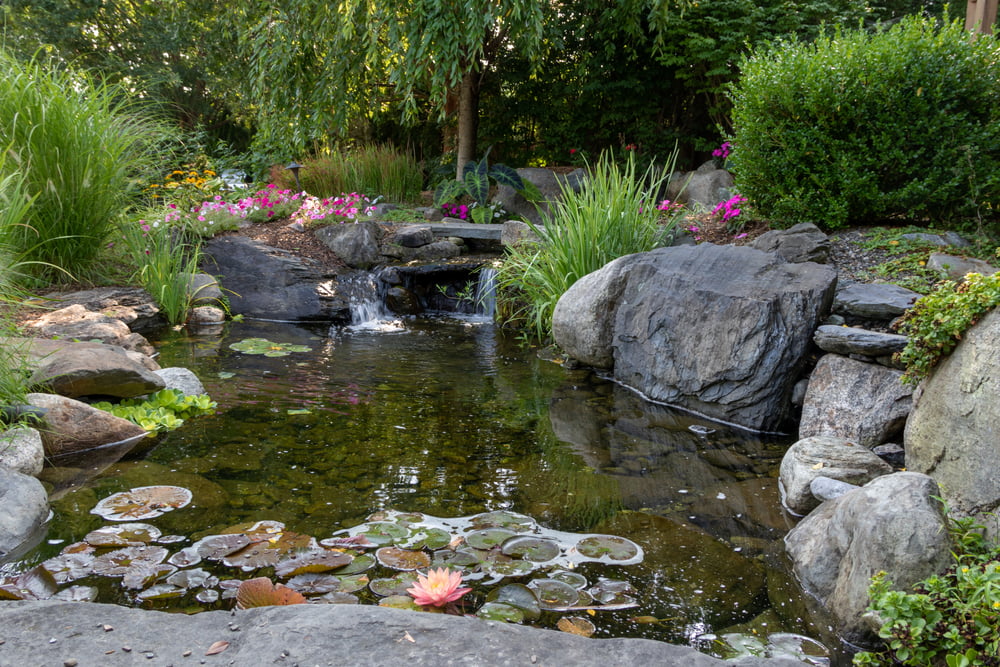
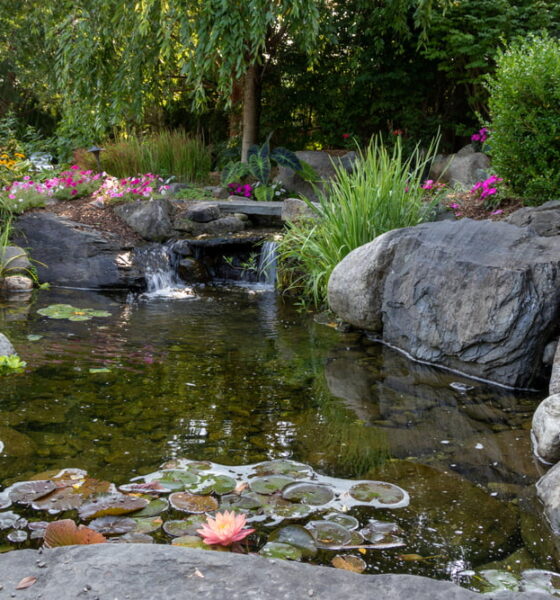
Environment
Backyard Ponds Can Improve the Eco-System Near Your Property
A lot of environmental concerns are becoming more significant these days. One of them is fears surrounding unsafe drinking water. Around 72% of diarrheal deaths are caused by unsanitary drinking water, which is often due to pollution in the nearby environment.
There are a lot of things that you can do to make your home eco-friendlier. We have talked at length about the benefits of investing in solar power and other forms of renewable energy as a means of lowering your home’s carbon footprint.
Most people appreciate the need to lower their carbon footprint to help the planet as a whole. However, they often don’t think enough about the environmental concerns in their own community. Or in their own literal backyard.
When you own a home, you are going to want to take steps to improve the quality of your drinking water by promoting the environment in the surrounding area. This can be great for your own health, as well as the animals and vegetation around you.
One of the interesting ways that you can help improve the quality of your water is by investing in a backyard pond. Keep reading to learn how this can help your quality of life and the environment.
Backyard Ponds Offer Great Benefits for Eco-Friendly Homeowners
A backyard pond is a great addition to any home. Not only does it look beautiful, but it can also provide a variety of benefits for kids and families.
One major benefit of having a backyard pond is that it provides a place for kids to play and explore. They can catch fish, watch the frogs jump, and discover all kinds of interesting plants and animals.
For parents, having a pond in the backyard can also provide some much needed peace and quiet, as kids are happily occupied outdoors.
Additionally, a pond can help improve water quality in your yard. This is especially important if you live in an area with poor water quality or have pets that tend to track dirt and mud into the house.
By having a pond, you can create a natural filtration system that will help keep your yard looking clean and tidy.
If you’re considering adding a backyard pond to your home, there are a few things to keep in mind.
First, you’ll need to choose the right location. It’s important to find a spot that gets plenty of sunlight and is away from any trees or shrubs, as these can cast shadows and make the pond too cool for plants and animals.
You’ll also need to consider the size of your pond. If you have limited space, you can opt for a small pond or even a large container filled with water.
You should also make sure that your pond is deep enough to support a variety of fish and plants, and that it has the right type of filtration system for your needs.
With these things in mind, adding a backyard pond can be a great way to create an inviting and enriching ecosystem right in your own backyard. Whether you’re looking for a fun activity for your kids, or just want somewhere relaxing to escape the hustle and bustle of daily life, a backyard pond is sure to be an excellent investment.
Size, depth, and location of your pond matter as much as the living creatures that the pond will host – Here are some basics to keep in mind:
Pond Size
When deciding on the size of your pond, it’s important to consider both the area you have available and the type of fish or other creatures you plan to keep.
A small pond (10×10 feet or less) is typically sufficient for goldfish or koi, while a larger pond (20×20 feet or more) is better for fish that require more space, such as bass or catfish.
If you’re planning to stock your pond with multiple species, a larger pond will give everyone plenty of room to swim and avoid conflict.
Pond Depth
The depth of your pond will also be determined by the type of plants and animals you plan to keep.
For example, if you want to add aquatic plants such as lilies or water hyacinths, your pond should be at least 12 inches deep to provide a suitable substrate for these shallow-rooted plants.
On the other hand, fish that like to hide in submerged vegetation need a deeper pond (3 feet or more) to provide adequate cover.
Pond Location
When choosing a location for your pond, it’s important to consider both practical and aesthetic concerns.
Think about where the sun hits your yard throughout the day. You’ll want to place your pond in an area that gets at least six hours of sunlight per day, as this will encourage the growth of aquatic plants and help keep the water warm enough for fish.
Consider the look of your yard and where a pond would fit in best. You may want to place it near existing landscaping features such as trees or shrubs, or you may want it to be the centerpiece of your yard.
Here are some of the best low maintenance plants and animals for your pond:
Plants
If you want low maintenance plants for your pond, there are a few good options.
Water lilies are a good option because they don’t need to be fertilized and they don’t need to be trimmed. They will also help to keep the water clean.
Lotus flowers are another good option because they are very easy to take care of.
Animals
If you are looking for low maintenance animals for your pond, there are a few good options.
Fish are a popular choice because they don’t require much care and are easy to maintain.
Frogs and turtles can also be great additions to ponds, as they often help keep the water clean and free of pests.
Other aquatic animals such as newts and salamanders can also be good choices for low maintenance ponds.
When it comes to plants and animals, make sure that the plants and animals you choose are compatible with each other. Take care that the plants and animals you choose will be able to thrive in the conditions of your pond.
Pond Compost
In order to keep your pond looking its best, you’ll need to add rich pond compost on a regular basis. Pond compost is a mixture of organic materials that helps to improve the quality of the water and support the growth of aquatic plants.
Adding this compost to your pond is a simple and easy process that will ensure its continued health for many years to come.
To add rich pond compost to your backyard pond, start by gathering the materials you’ll need for the job. You’ll need at least two five-gallon buckets of high-quality compost as well as a few bags of peat moss.
If you have a submersible filter for your pond, this is also preferable and will help to maintain the quality of the water in your pond.
Once you’ve gathered all of your materials, begin adding them to your backyard pond one bucket at a time. Add about half of the compost first and stir it in until it is thoroughly mixed with the water.
Then, add the remaining compost and continue stirring until everything is well-combined.
Finally, you’ll need to add some peat moss as well.
Sprinkle a few handfuls of peat moss around the edges of your pond, where it can naturally filter into the water. This will help to improve the quality of the water even further and keep your pond looking its best.
Rich pond compost is an essential part of keeping your backyard pond healthy and beautiful. By adding this compost to your pond on a regular basis, you’ll be able to enjoy its benefits for many years to come.
Adding a Backyard Pond Can Be Great for the Nearby Environment and Your Health
There are a lot of things that eco-friendly homeowners can do, which includes adding a backyard pond. With these tips in mind, you can create a beautiful and thriving backyard pond that is the perfect addition to your home. It will be a wonderful thing to add as an eco-friendly homeowner. Whether you’re looking for a peaceful place to relax or an exciting habitat for wildlife, a backyard pond has something for everyone. So why wait? Start planning your pond today!


 Environment9 months ago
Environment9 months agoAre Polymer Banknotes: an Eco-Friendly Trend or a Groundswell?

 Environment10 months ago
Environment10 months agoEco-Friendly Home Improvements: Top 7 Upgrades for 2025

 Energy12 months ago
Energy12 months agoA Closer Look at The Rapid Growth of Solar Energy in Ireland

 Features8 months ago
Features8 months agoEco-Friendly Cryptocurrencies: Sustainable Investment Choices






